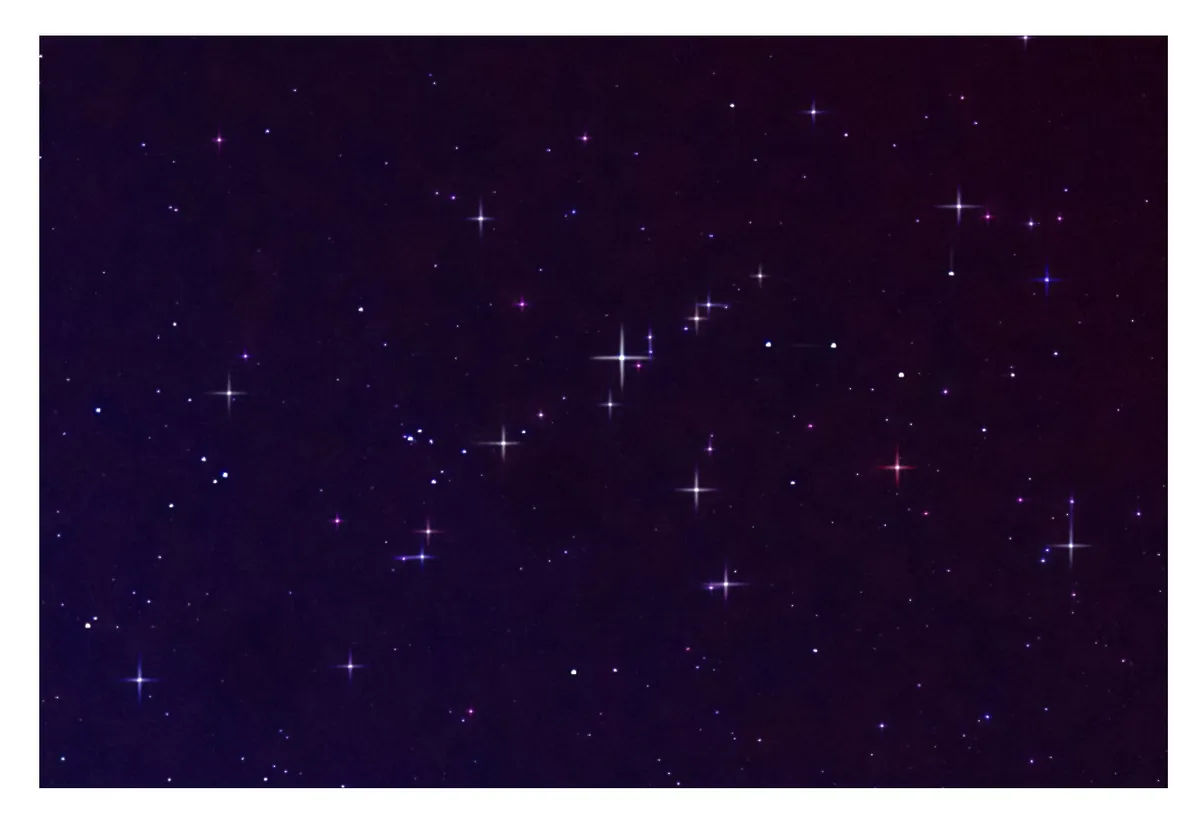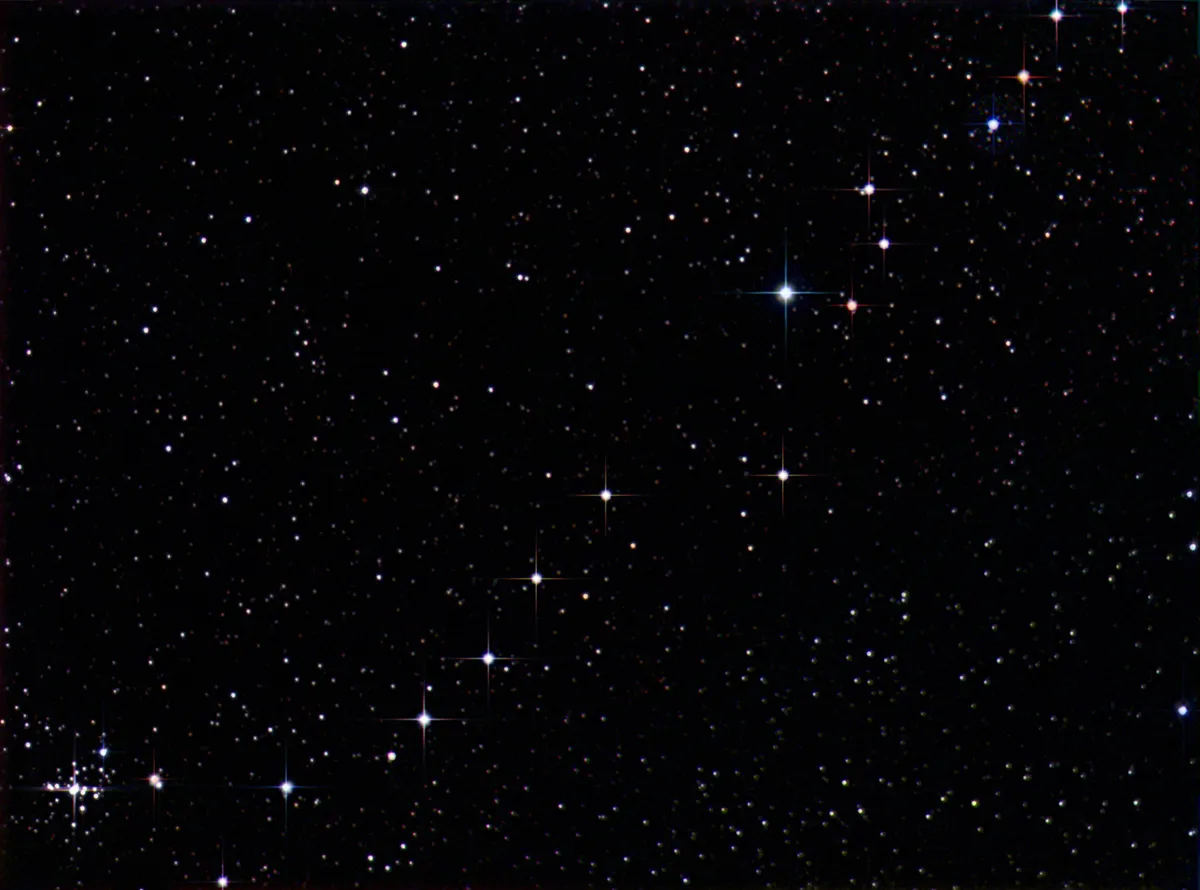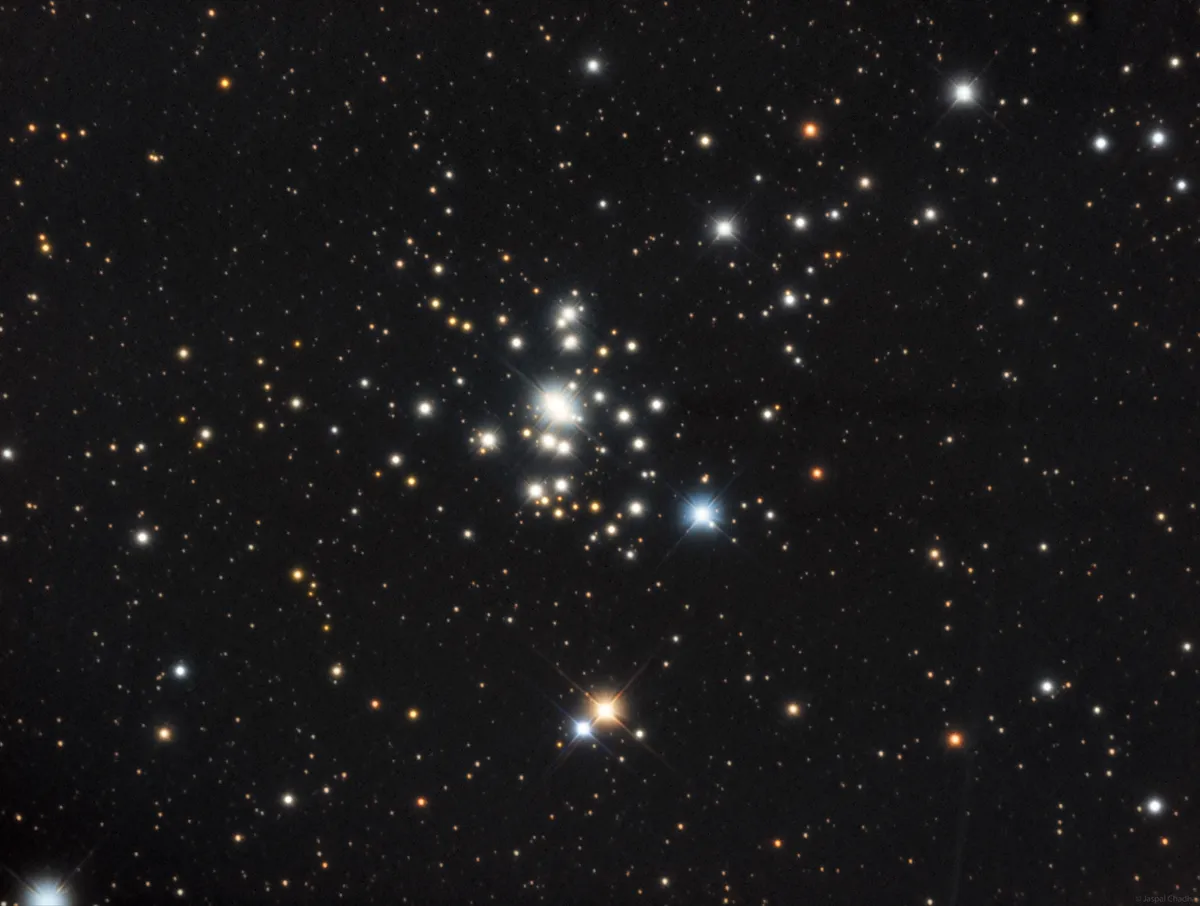Kemble’s Cascade is an asterism of more than 20 stars in the constellation Camelopardalis, with open cluster NGC 1502 at one end.
This star pattern is not one of the formal constellations visible in the night sky, but is an informal pattern of stars known as an asterism.

Kemble's Cascade has at its centre, mag. +4.9 HIP 18505 and extends a degree from this star northwest and 1.5° to the southeast.
The main ‘structure’ is formed from stars between mag. +7 and +8 but fainter members down to mag. +10 help reinforce the straight-line appearance.
It's best seen through a low-power telescope view and reveals some lovely star colours.

Look for the two orange members in the northwest leg of the cascade.
Locate the cascade by extending the line between Caph (Beta (β) Cassiopeiae) and Segin (Epsilon (ε) Cassiopeiae) for the same distance again
Kemble's Cascade is best observed on early evenings during November and December through binoculars or a small telescope and it will look like a vertical cascade of stars tumbling into the open star cluster NGC 1502 at the bottom.

Use Kemble's Cascade to locate NGC 1502
From Kemble’s Cascade you can easily find NGC 1502, a mag. +5.7 open star cluster located at the southeast end of the line of stars that forms the cascade.
Kemble’s Cascade is often described as appearing like a waterfall of stars, pouring into a splash pool represented by NGC 1502.

The cluster appears to contain around 25 stars through a 300mm scope, two of which are conspicuous because they are brighter than the rest.
These are components of the double star Struve 485, the pair being known as Struve 485 AE. The cluster has an apparent diameter of 20 arcminutes and is 2,700 lightyears away.
Have you managed to observe or photograph Kemble's Cascade? Let us know or send us your images. You can also share them with us via Facebook, Twitter and Instagram.
